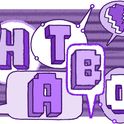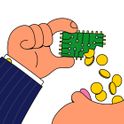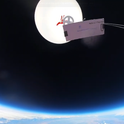A murmuration: the navigational processes of birds are thought to involve quantum effects
Some debates on public health are best viewed as sociological rather than scientific questions. The controversy over the dangers of electromagnetic fields (EMFs), such as those produced by power lines, microwave ovens and mobile phones, is one. From a scientific perspective there is no controversy. Thousands of papers have been written on the topic, and we know more about the putative risks than about those of most chemicals. The conclusions of these studies are clearly adduced by the World Health Organisation, which states that “short-term exposure [to EMFs] at the levels present in the environment or in the home do not cause any apparent detrimental effects.” Your brain is not being fried, nor your genes mutated, by pylons, Wi-Fi or mobile phones.
Yet the arguments continue, fuelled in part by mythical fears of the unseen. The issue also acts as a surrogate for a general technophobia, as betrayed by one of the many websites cautioning against EMFs: “Don’t sit too close to your computer… Don’t stand close to your microwave oven… Be wary of cordless appliances… and always always always remember that EMFs pass right through walls.” As with homeopathy and vaccination scares, advocates turn crumbs of scientific validation into banquets. That’s why a recent study investigating claims that weak magnetic fields can mess with our metabolic batteries is significant.
Of all the studies alleging biological effects of low-level EMFs, one stands out as unusually credible. Since 2004, Russian biochemist Anatoly Buchachenko and his colleagues have been publishing papers describing how magnetic fields influence a crucial biochemical reaction: the production of a molecule called ATP, the main energy source for all kinds of enzyme-assisted processes in our cells. ATP is made by a class of enzyme that contains magnesium atoms. Buchachenko and colleagues say that a weak magnetic field makes the reaction more than twice as fast for one of the three common isotopes of magnesium than for the other two.
Isotopes are different forms of an element in which the atoms have different numbers of neutrons in their nuclei: for example, ordinary hydrogen (no neutrons) and deuterium or heavy hydrogen (one neutron). Isotopes are essentially identical in their chemical properties. But the isotope magnesium-25, which makes up a tenth of all natural magnesium, differs from magnesium-24 and magnesium-26 in that its combination of nuclear particles makes it magnetic.
Buchachenko and colleagues think that the different rates of reaction they have seen can be explained if the enzyme initially creates a pair of free-radical molecules, which are magnetic and therefore “feel” a magnetic magnesium atom. An additional magnetic field in the environment, they suggest, could disturb this interaction. So, unlike most claims of biochemical consequences of small electromagnetic fields, this one is supported by a plausible explanation.
In fact, it’s more than that. A “radical-pair” effect is also currently the favoured explanation for the one unambiguously established biological effect of weak magnetic fields: use of the Earth’s magnetic field for navigation by birds. What makes this behaviour even more extraordinary is that it might rely on the kind of weird quantum-mechanical effects that researchers are trying to harness in quantum computers, involving mysterious “entanglement” between two subatomic particles. Bird brains are a special case, however—humans have no such geomagnetic compass.
But physicist Darragh Crotty and his coworkers at Trinity College Dublin have painstakingly replicated Buchachenko’s experiments on ATP synthesis and have found no significant differences in the reaction rates for all three magnesium isotopes. How come? No one knows.
At face value, these results seem only to muddy an already murky debate: Buchachenko’s findings have been predictably seized on by EMF scaremongers, even though their experiments used conditions different from those in living cells. But there are broader lessons here too for how science is done. Detailed attempts to replicate earlier findings are rather rare in science, for all its purported emphasis on reproducibility. That’s not surprising—there’s generally little kudos in proving someone else right or wrong. Replication tends to happen only if the original findings are important or striking—that’s why the discovery of superconductivity at high temperatures was quickly confirmed, and the report of “cold” nuclear fusion in a test tube quickly disproved. The new results are therefore a reminder that this aspect of the scientific method owes more to theory than practice. If all findings were as interesting as Buchachenko’s, perhaps many more would be proved wrong.
While the reasons for the discrepancy between the Russian and Dublin results has yet to be established, the lack of agreement will surprise no one who has worked in a biology lab. It’s hard for others to reproduce experiments from a published paper—direct collaboration might be needed to iron out all the protocols and procedures. Behind the bland assurances of the scientific literature lies something far messier, and far more of an art.
Some debates on public health are best viewed as sociological rather than scientific questions. The controversy over the dangers of electromagnetic fields (EMFs), such as those produced by power lines, microwave ovens and mobile phones, is one. From a scientific perspective there is no controversy. Thousands of papers have been written on the topic, and we know more about the putative risks than about those of most chemicals. The conclusions of these studies are clearly adduced by the World Health Organisation, which states that “short-term exposure [to EMFs] at the levels present in the environment or in the home do not cause any apparent detrimental effects.” Your brain is not being fried, nor your genes mutated, by pylons, Wi-Fi or mobile phones.
Yet the arguments continue, fuelled in part by mythical fears of the unseen. The issue also acts as a surrogate for a general technophobia, as betrayed by one of the many websites cautioning against EMFs: “Don’t sit too close to your computer… Don’t stand close to your microwave oven… Be wary of cordless appliances… and always always always remember that EMFs pass right through walls.” As with homeopathy and vaccination scares, advocates turn crumbs of scientific validation into banquets. That’s why a recent study investigating claims that weak magnetic fields can mess with our metabolic batteries is significant.
Of all the studies alleging biological effects of low-level EMFs, one stands out as unusually credible. Since 2004, Russian biochemist Anatoly Buchachenko and his colleagues have been publishing papers describing how magnetic fields influence a crucial biochemical reaction: the production of a molecule called ATP, the main energy source for all kinds of enzyme-assisted processes in our cells. ATP is made by a class of enzyme that contains magnesium atoms. Buchachenko and colleagues say that a weak magnetic field makes the reaction more than twice as fast for one of the three common isotopes of magnesium than for the other two.
Isotopes are different forms of an element in which the atoms have different numbers of neutrons in their nuclei: for example, ordinary hydrogen (no neutrons) and deuterium or heavy hydrogen (one neutron). Isotopes are essentially identical in their chemical properties. But the isotope magnesium-25, which makes up a tenth of all natural magnesium, differs from magnesium-24 and magnesium-26 in that its combination of nuclear particles makes it magnetic.
Buchachenko and colleagues think that the different rates of reaction they have seen can be explained if the enzyme initially creates a pair of free-radical molecules, which are magnetic and therefore “feel” a magnetic magnesium atom. An additional magnetic field in the environment, they suggest, could disturb this interaction. So, unlike most claims of biochemical consequences of small electromagnetic fields, this one is supported by a plausible explanation.
In fact, it’s more than that. A “radical-pair” effect is also currently the favoured explanation for the one unambiguously established biological effect of weak magnetic fields: use of the Earth’s magnetic field for navigation by birds. What makes this behaviour even more extraordinary is that it might rely on the kind of weird quantum-mechanical effects that researchers are trying to harness in quantum computers, involving mysterious “entanglement” between two subatomic particles. Bird brains are a special case, however—humans have no such geomagnetic compass.
But physicist Darragh Crotty and his coworkers at Trinity College Dublin have painstakingly replicated Buchachenko’s experiments on ATP synthesis and have found no significant differences in the reaction rates for all three magnesium isotopes. How come? No one knows.
At face value, these results seem only to muddy an already murky debate: Buchachenko’s findings have been predictably seized on by EMF scaremongers, even though their experiments used conditions different from those in living cells. But there are broader lessons here too for how science is done. Detailed attempts to replicate earlier findings are rather rare in science, for all its purported emphasis on reproducibility. That’s not surprising—there’s generally little kudos in proving someone else right or wrong. Replication tends to happen only if the original findings are important or striking—that’s why the discovery of superconductivity at high temperatures was quickly confirmed, and the report of “cold” nuclear fusion in a test tube quickly disproved. The new results are therefore a reminder that this aspect of the scientific method owes more to theory than practice. If all findings were as interesting as Buchachenko’s, perhaps many more would be proved wrong.
While the reasons for the discrepancy between the Russian and Dublin results has yet to be established, the lack of agreement will surprise no one who has worked in a biology lab. It’s hard for others to reproduce experiments from a published paper—direct collaboration might be needed to iron out all the protocols and procedures. Behind the bland assurances of the scientific literature lies something far messier, and far more of an art.












